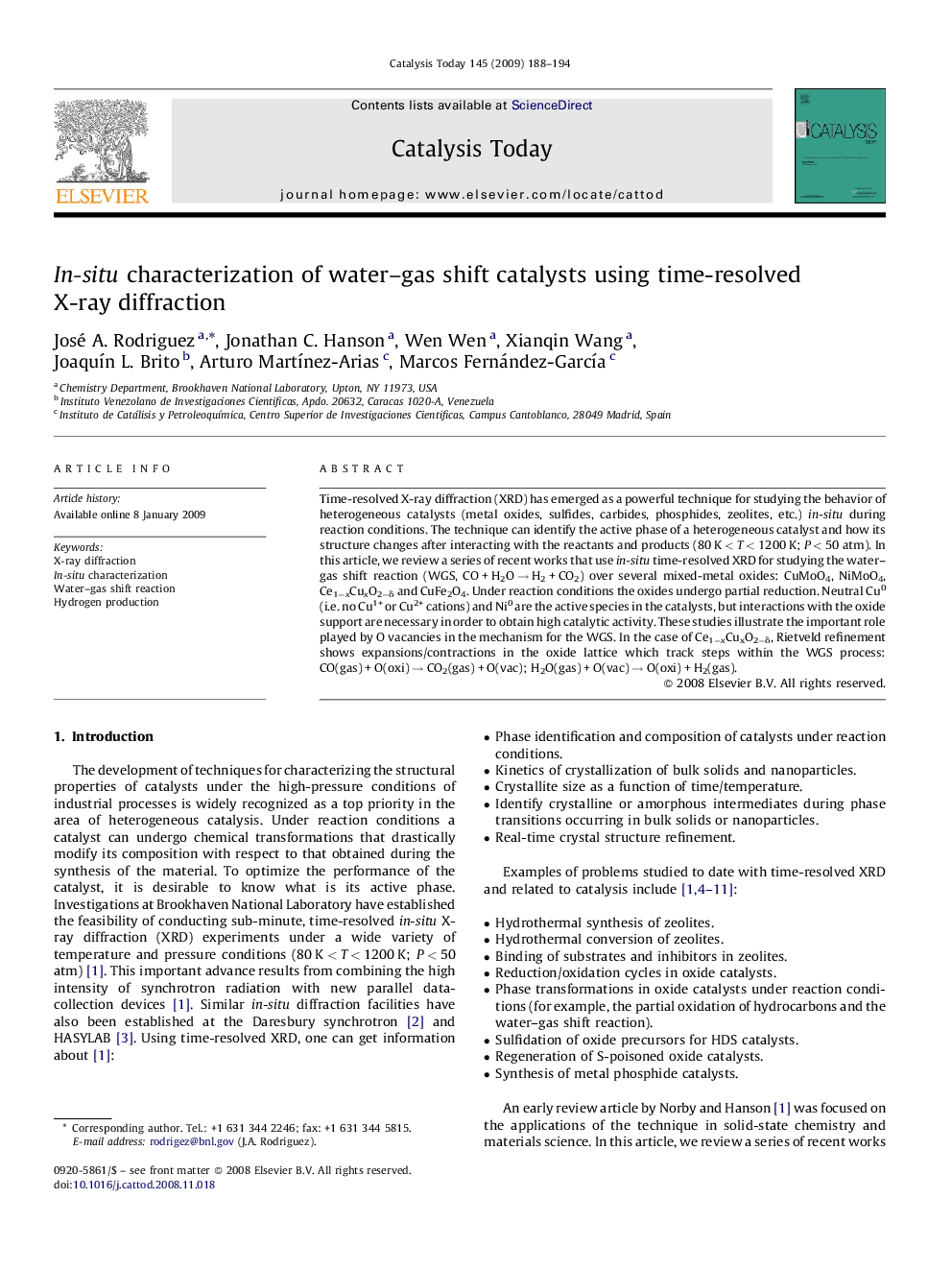| Article ID | Journal | Published Year | Pages | File Type |
|---|---|---|---|---|
| 57151 | Catalysis Today | 2009 | 7 Pages |
Time-resolved X-ray diffraction (XRD) has emerged as a powerful technique for studying the behavior of heterogeneous catalysts (metal oxides, sulfides, carbides, phosphides, zeolites, etc.) in-situ during reaction conditions. The technique can identify the active phase of a heterogeneous catalyst and how its structure changes after interacting with the reactants and products (80 K < T < 1200 K; P < 50 atm). In this article, we review a series of recent works that use in-situ time-resolved XRD for studying the water–gas shift reaction (WGS, CO + H2O → H2 + CO2) over several mixed-metal oxides: CuMoO4, NiMoO4, Ce1−xCuxO2−δ and CuFe2O4. Under reaction conditions the oxides undergo partial reduction. Neutral Cu0 (i.e. no Cu1+ or Cu2+ cations) and Ni0 are the active species in the catalysts, but interactions with the oxide support are necessary in order to obtain high catalytic activity. These studies illustrate the important role played by O vacancies in the mechanism for the WGS. In the case of Ce1−xCuxO2−δ, Rietveld refinement shows expansions/contractions in the oxide lattice which track steps within the WGS process: CO(gas) + O(oxi) → CO2(gas) + O(vac); H2O(gas) + O(vac) → O(oxi) + H2(gas).
